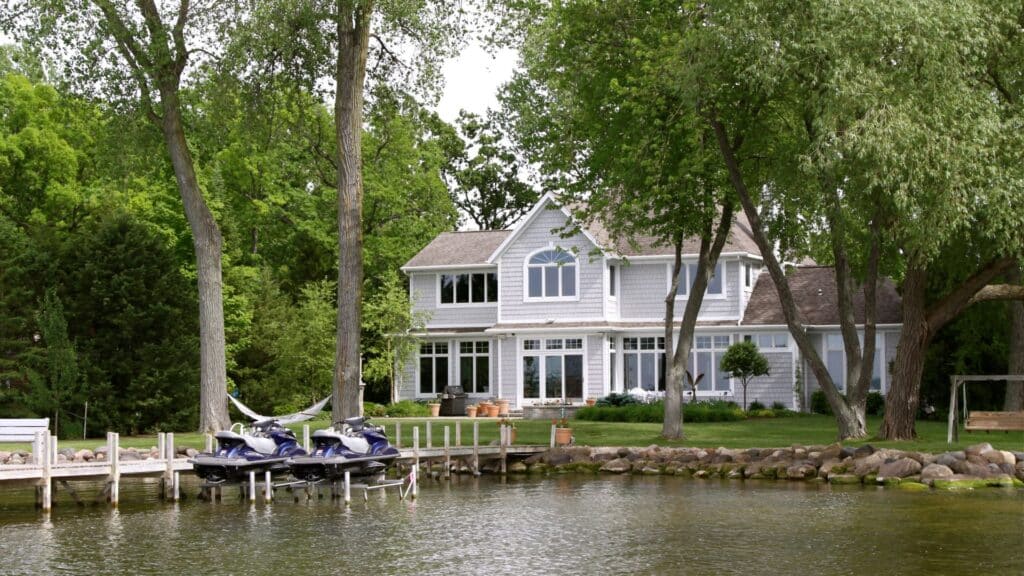Seawalls are essential for protecting waterfront properties from erosion, flooding, and wave damage. However, like any structure exposed to constant water pressure and harsh environmental conditions, seawalls can degrade over time. If left unattended, minor damages can escalate into major structural failures, leading to costly repairs or even complete replacement. Recognizing early warning signs and knowing when to take action can help extend the life of your seawall and ensure your property remains protected.
Why Seawall Maintenance is Critical
A well-maintained seawall provides long-term defense against soil erosion, water intrusion, and property loss. However, as time passes, natural wear and tear can compromise its effectiveness. Regular inspections and timely repairs are necessary to maintain the integrity of your seawall and prevent extensive damage. Ignoring small issues can lead to severe structural failures, increased repair costs, and potential hazards to your property and nearby structures.
Common Signs Your Seawall Needs Repair
Understanding the early indicators of seawall deterioration can help you take action before the damage worsens. Here are some key warning signs to look for:
1. Cracks and Fractures
Cracks in a seawall can be caused by excessive water pressure, freeze-thaw cycles, or aging materials. Small cracks may seem insignificant at first, but they can expand over time, weakening the entire structure. If you notice multiple cracks or widening gaps, it’s time to address the issue before it leads to structural failure.
2. Soil Erosion Behind the Wall
One of the most common problems with seawalls is soil loss behind the structure. If you see sinkholes, depressions, or gaps forming behind your seawall, it indicates that water is seeping through and washing away soil. This can cause instability and reduce the effectiveness of the barrier.
3. Bowing or Leaning Sections
A properly constructed seawall should stand upright and firmly in place. If you notice sections of the wall bowing outward or leaning, it’s a sign of excessive water pressure, weakened materials, or structural shifting. This is a major warning sign that requires immediate professional evaluation.
4. Rust and Corrosion on Metal Components
Steel tie-backs, anchor rods, and other metal components play a crucial role in holding your seawall together. Exposure to saltwater and harsh weather can cause rust and corrosion, weakening the structure. If rust is widespread or metal components appear brittle, they may need to be reinforced or replaced.
5. Gaps Between Seawall Panels
Seawalls made of concrete, vinyl, or steel often have panels that should fit tightly together. If you notice gaps forming between these panels, water can flow through unchecked, leading to erosion and increased pressure behind the wall.
6. Water Pooling Behind the Seawall
Standing water behind your seawall suggests poor drainage, which can lead to hydrostatic pressure buildup. If drainage pipes or weep holes are clogged or failing, the pressure can cause cracks, leaks, or even total collapse.
7. Visible Deterioration or Wear
Over time, exposure to constant water movement, sunlight, and fluctuating temperatures can weaken seawall materials. If your seawall appears to be crumbling, chipping, or eroding, it may be time to reinforce or repair sections before they deteriorate further.
When to Take Action on Seawall Repairs
While some minor seawall issues can be addressed with basic maintenance, certain problems require immediate professional intervention. Here’s how to determine when you should take action:
Immediate Action Required
Large cracks or sections breaking apart
Severe soil erosion or sinkholes forming behind the wall
Leaning or collapsing sections of the seawall
Extensive rust or corrosion on structural components
Water pouring through cracks or gaps
If you notice any of these critical issues, contact a marine contractor immediately to assess the damage and prevent further deterioration.
Schedule Repairs Soon
Small cracks or minor wear that could worsen over time
Early signs of soil loss behind the seawall
Mild rust or corrosion on metal parts
Weep holes or drainage pipes that appear clogged
For these issues, scheduling a professional inspection and repairs within the next few months can help prevent costly damage down the line.
Routine Maintenance and Monitoring
Annual inspections to check for wear and tear
Cleaning drainage systems to prevent clogs
Minor touch-ups like sealing cracks or reinforcing weak spots
Regular maintenance helps extend the lifespan of your seawall and minimizes the need for major repairs.
How to Repair and Reinforce a Seawall
Depending on the severity of the damage, different repair methods may be needed to restore your seawall’s strength and effectiveness. Here are some common repair solutions:
1. Crack Sealing and Patching
Small cracks can be repaired using marine-grade sealants or epoxy injections to prevent further expansion and water infiltration.
2. Soil Stabilization and Backfill Replacement
If soil erosion is an issue, adding backfill material and reinforcing the area behind the seawall with geotextile fabric or riprap can help stabilize the structure.
3. Reinforcing or Replacing Tie-Backs
If metal tie-backs or anchor rods have rusted or weakened, replacing them with corrosion-resistant materials can restore stability.
4. Installing Additional Drainage Systems
Ensuring proper drainage is key to seawall longevity. If weep holes or drainage pipes are clogged, clearing them or installing new drainage solutions can prevent pressure buildup.
5. Adding Riprap or Wave Deflectors
Placing large rocks (riprap) at the base of the seawall can help absorb wave energy and reduce erosion. Curved wave deflectors can also minimize the impact of incoming waves.
When to Consider Seawall Replacement
If your seawall has extensive structural failure, repeated repairs may not be enough. In cases where:
The seawall is severely leaning or collapsing
Large sections have crumbled or washed away
Metal supports are completely corroded
Repeated repairs are no longer effective
A full seawall replacement may be the best long-term solution. Modern materials like vinyl, composite, or reinforced concrete offer greater durability and longevity compared to older seawall designs.
Final Thoughts
Seawalls play a crucial role in protecting your waterfront property, but they require regular maintenance and timely repairs to remain effective. By recognizing the warning signs of seawall deterioration and taking swift action when needed, you can prevent costly damage and ensure long-term shoreline stability.
If you suspect your seawall needs repairs, consulting a professional marine contractor is the best way to assess the damage and determine the most effective repair strategy. Staying proactive with maintenance and inspections will help safeguard your property for years to come, giving you peace of mind and reliable protection against the elements.




